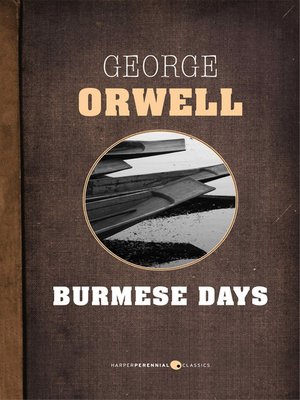

The wunthanu athins or “own race associations” were spreading nationalist beliefs throughout the countryside, while in the city, the YMBA or Young Men’s Buddhist Association, was becoming a centre for disillusioned Burmese civil servants who found themselves the objects of discrimination within the racist hierarchy of the Indian Civil Service (ICS). In the 1920s, a new national identity was being forged among young people throughout Burma. The political context of the book reveals a lot about the Burmese young man.

By describing him in this way, Orwell is singling him out as a type, and one that would have been immediately recognizable to his colonial readers as the “modern” Burmese young man. He greases his hair Ingaleik or “English” style, and declines to perform the traditional shiko or full bow to one’s superior that an interaction between a Burmese man and a European would have otherwise have dictated. The Burmese man wears a hybrid of Eastern and Western clothing known as khit san or “modern” dress. The passage is short, but hints at a greater meaning. Flory quickly sends the man away and then he (Flory), and the newly-arrived Englishwoman, Elizabeth, continue into the store whose “European look…piled with Lancashire-made cotton shirts and almost incredibly cheap German clocks” comforts Elizabeth after “the barbarity of the bazaar.” The passage goes on to say that the Burmese youth is delivering a letter to the European Flory from his spurned Burmese mistress Ma Hla May who is “blackmailing” him. He greeted Flory with a small awkward movement as though restraining himself from shikoing…

They were about to climb the steps when a slim youth of twenty, damnably dressed in a longyi, blue cricket blazer and bright yellow shoes, with his hair parted and greased ‘Ingaleik fashion’, detached himself from the crowd and came after them.

Recently, I was re-reading George Orwell’s 1933 novel, Burmese Days, which the author based on his experiences as an imperial policeman in lower Burma in the 1920s, when I came upon a passage that reminded me of an entirely different dimension to the evolution of Burmese dress, that is, the way in which clothing came to symbolize the debates over Burmese nationalism at the beginning of the twentieth-century. Burmese men wear longyi and blazers at an elephant camp.


 0 kommentar(er)
0 kommentar(er)
